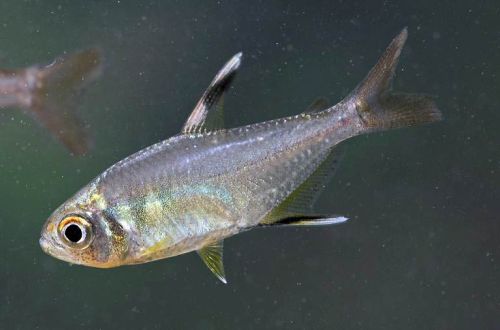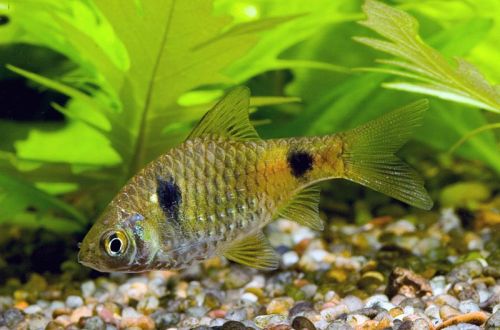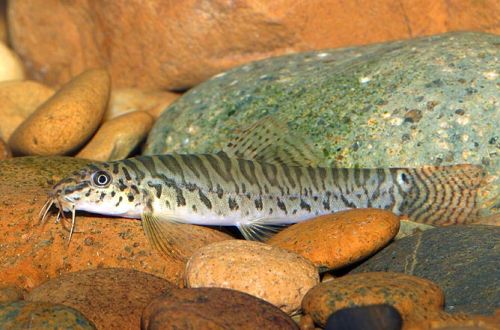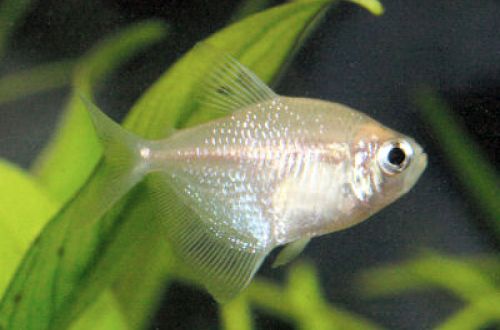
Trinidadian tetra
The Trinidadian tetra, scientific name Hemigrammus unilineatus, belongs to the Characidae family. It is a close relative of such popular fish as Tetra Firefly, Pulcher, Golden Tetra. It has a less bright color, so it is not so common. The advantages include ease of maintenance and the ability to breed in a home aquarium, under certain conditions.

Contents
Habitat
It originates from South America, is found in river systems in the north of the continent, flowing into the Atlantic Ocean. The natural habitat extends into Venezuela, Guyana, Suriname, Eastern Guiana and northeast Brazil, as well as the nearby island of Trinidad and Tobago. Inhabits various biotopes – these can be lakes, backwaters, forest streams and rivers, tropical swamps containing both clean running water and turbid stagnant water.
Brief information:
- The volume of the aquarium – from 70 liters.
- Temperature – 23-28°C
- Value pH — 5.5–7.5
- Water hardness – soft (1-20 dGH)
- Substrate type – any dark
- Lighting – subdued
- Brackish water – no
- Water movement is weak
- The size of the fish is about 5 cm.
- Feeding – any food of suitable size
- Temperament – peaceful
- Keeping in a flock of at least 8-10 individuals
Description
Adults reach a length of about 5 cm. The color is silvery in bright light. The integuments of the body are translucent and internal organs, such as the swim bladder, are visible through them. There are black markings on the anal and dorsal fins. Tail with red tints. Sexual dimorphism is weakly expressed, differences between male and female are insignificant. However, some experts are able to determine the sex of the fish by the size and shape of the visible swim bladder.
Food
An omnivorous fish, in a home aquarium, it will accept most popular foods of a suitable size. The daily diet may consist of dry (flakes, granules), freeze-dried, frozen, live (brine shrimp, bloodworm, daphnia, etc.) products.
Maintenance and care, arrangement of the aquarium
The optimal size of the aquarium for a flock of 8-10 fish starts from 70 liters. Considering the diversity of natural biotopes in which the Trinidadian Tetras live, the choice of design fades into the background when keeping this species. The main thing is to provide several open areas for swimming and to prevent excessive overgrowth of the aquarium with live plants.
The fish is able to adapt to a wide range of hydrochemical parameters, which allows the aquarist to choose the conditions of keeping that it will be easier for him to maintain based on his experience.
Behavior and Compatibility
It is recommended to purchase a flock of at least 8-10 individuals. Alone or in a small group, they become either overly shy or show hostility towards their neighbors in the aquarium – the behavior depends on the size of other fish. If the flock is large, then the Trinidadian tetras will be a great addition to the freshwater fish community.
Breeding / breeding
If tetras are in a suitable environment and receive a balanced diet, then spawning occurs regularly. However, unlike wild fish, there is no seasonality of breeding. Fry can appear at any time, which makes it difficult to breed in a community aquarium. The situation is also complicated by the fact that this species does not have developed parental instincts, so eating their own offspring is the norm for them. Missing the moment of spawning, you can very quickly lose the entire brood.
For the safety of future offspring, bunches of small-leaved plants are placed in the aquarium, forming dense thickets, where the fry that appear can hide, and when they are noticed by the aquarist, they are transferred to a separate tank. On our website in the “Aquarium plants” section, it is possible to choose the right plants for spawning.
Tiny fry are initially fed microscopic foods, such as shoe ciliates, or special suspensions. Having matured, they will be able to accept larger foods, for example, nauplii brine shrimp.
Fish diseases
A balanced aquarium biosystem with suitable conditions is the best guarantee against the occurrence of any disease. If the fish’s behavior, color has changed, non-characteristic spots and other symptoms have appeared, the first thing to do is to check the water parameters, and only then proceed to treatment. Read more about symptoms and treatments in the Aquarium Fish Diseases section.





